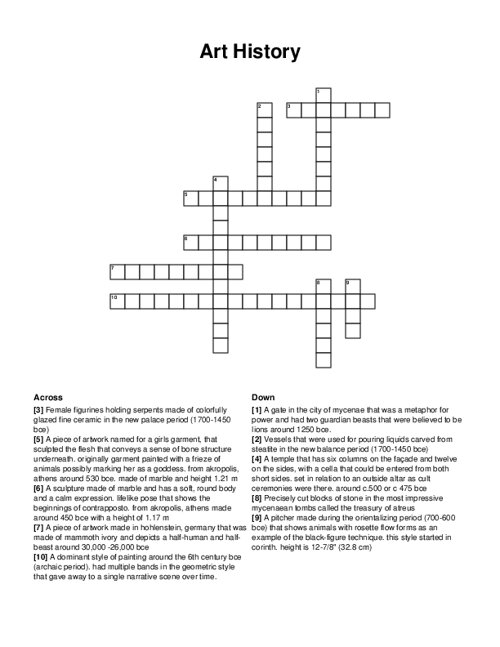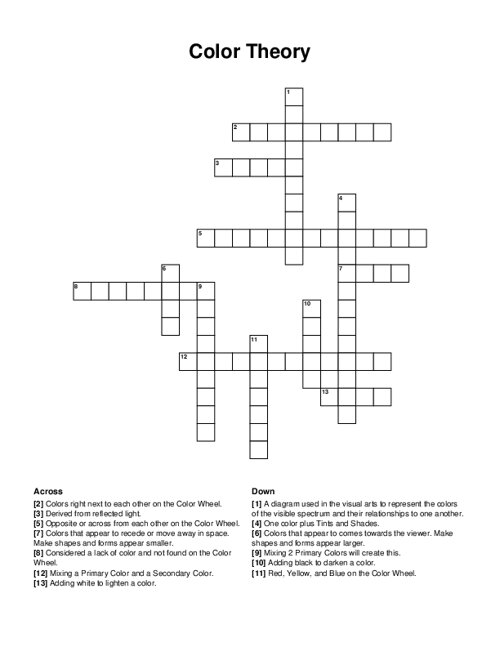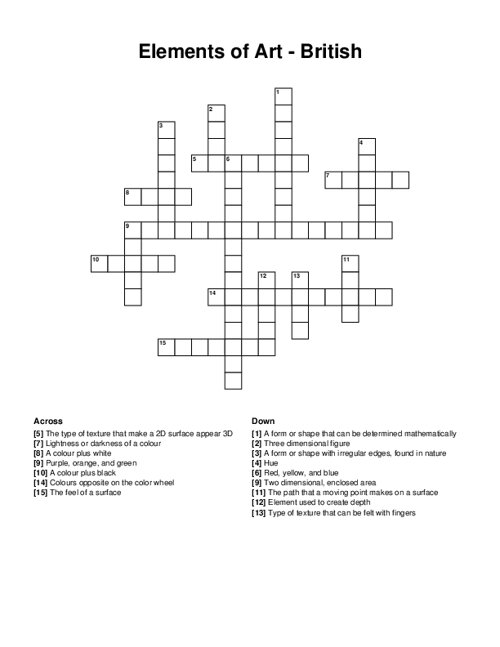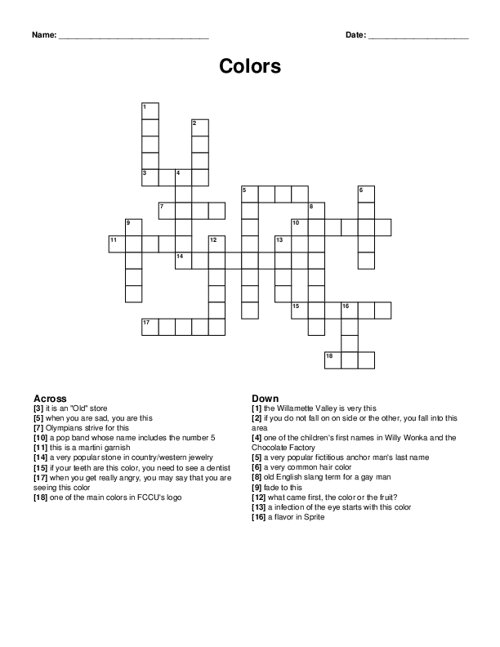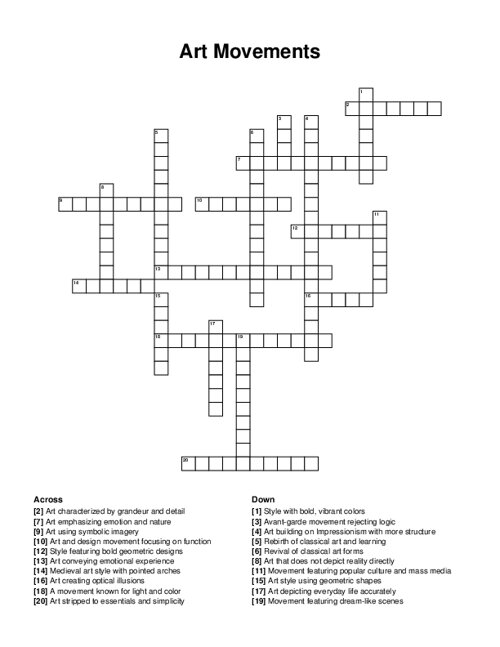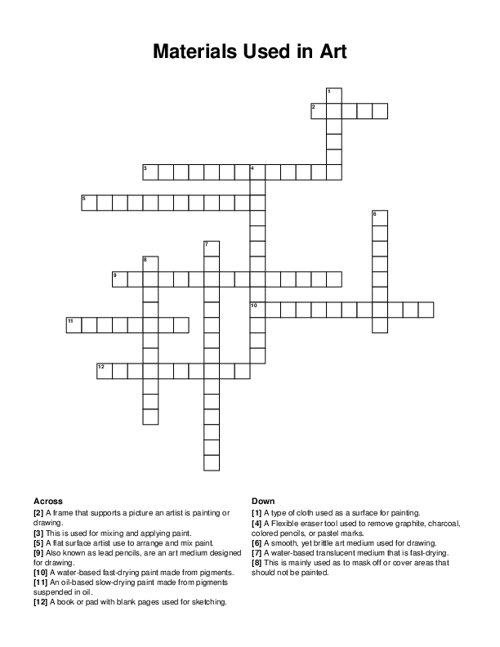Art History Crossword Puzzle
Download and print this Art History crossword puzzle.
Related puzzles:
Browse all Arts / Crafts Puzzles
QUESTIONS LIST:
- balck figure vessels : a dominant style of painting around the 6th century bce (archaic period). had multiple bands in the geometric style that gave away to a single narrative scene over time.
- olpe : a pitcher made during the orientalizing period (700-600 bce) that shows animals with rosette flow forms as an example of the black-figure technique. this style started in corinth. height is 12-7/8" (32.8 cm)
- lion gate : a gate in the city of mycenae that was a metaphor for power and had two guardian beasts that were believed to be lions around 1250 bce.
- kritios boy : a sculpture made of marble and has a soft, round body and a calm expression. lifelike pose that shows the beginnings of contrapposto. from akropolis, athens made around 450 bce with a height of 1.17 m
- aphaia aegina : a temple that has six columns on the façade and twelve on the sides, with a cella that could be entered from both short sides. set in relation to an outside altar as cult ceremonies were there. around c.500 or c 475 bce
- rhytons : vessels that were used for pouring liquids carved from steatite in the new balance period (1700-1450 bce)
- faience : female figurines holding serpents made of colorfully glazed fine ceramic in the new palace period (1700-1450 bce)
- peplos kore : a piece of artwork named for a girls garment, that sculpted the flesh that conveys a sense of bone structure underneath. originally garment painted with a frieze of animals possibly marking her as a goddess. from akropolis, athens around 530 bce. made of marble and height 1.21 m
- ashlar : precisely cut blocks of stone in the most impressive mycenaean tombs called the treasury of atreus
- lion human : a piece of artwork made in hohlenstein, germany that was made of mammoth ivory and depicts a half-human and half-beast around 30,000 -26,000 bce
